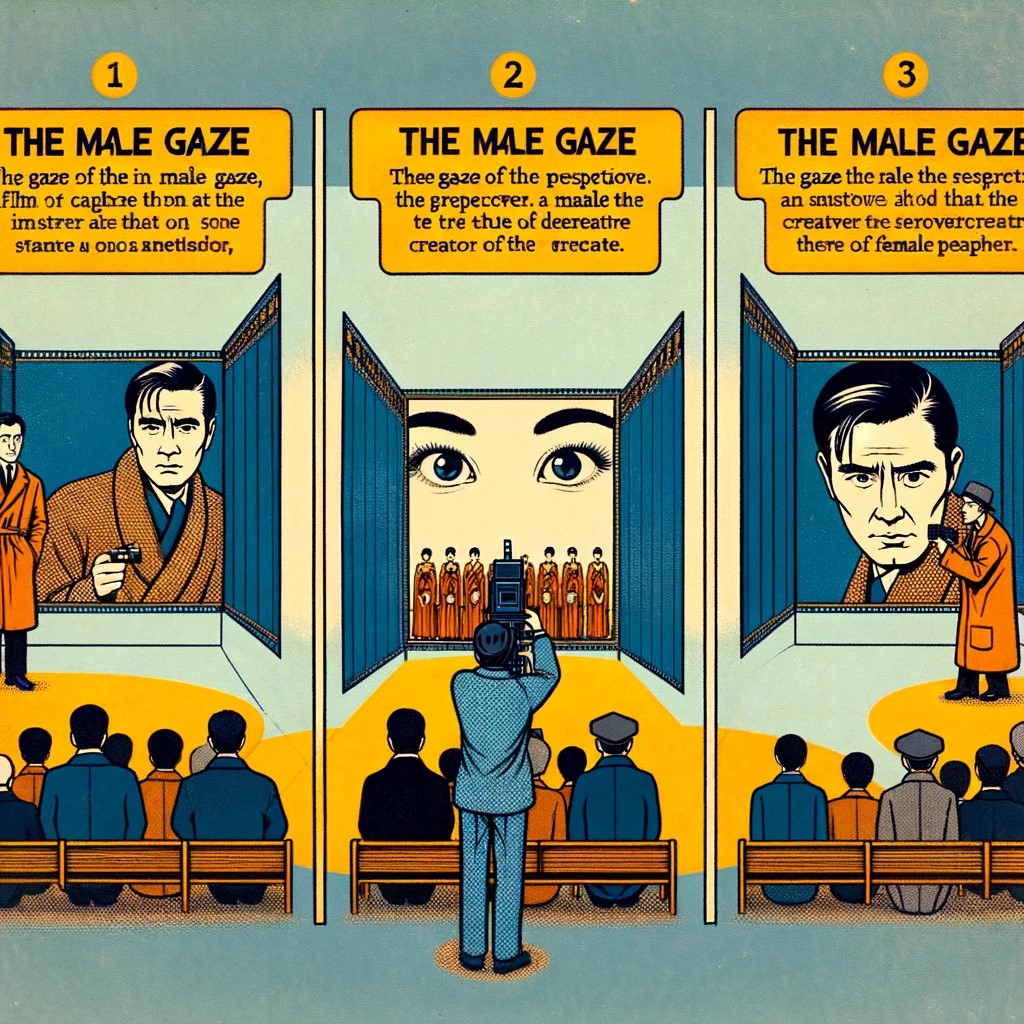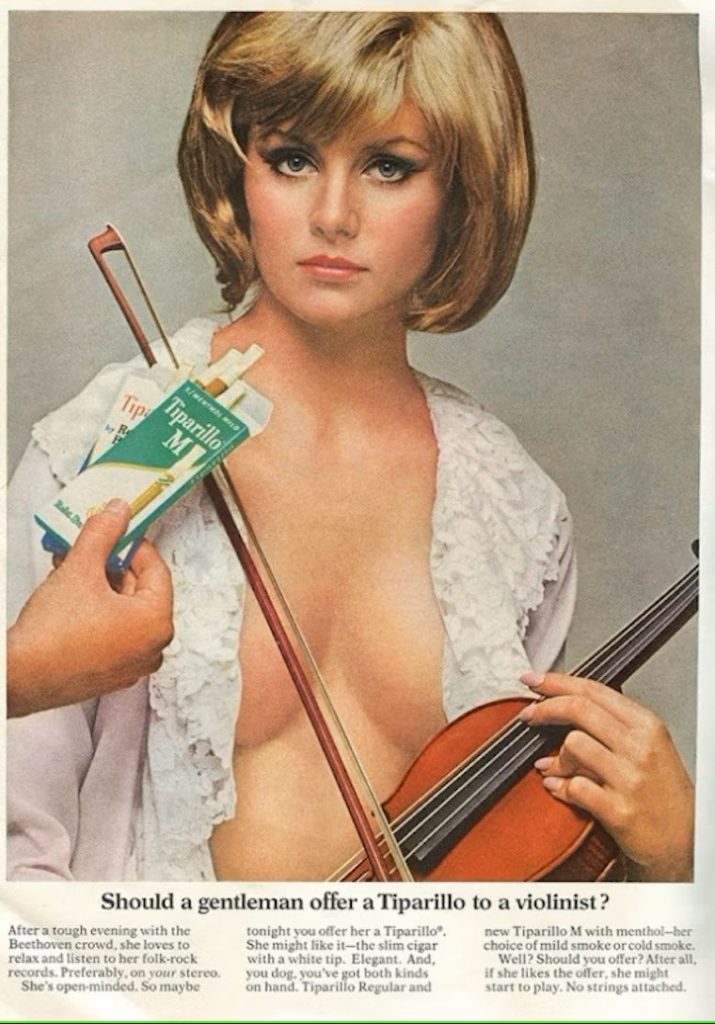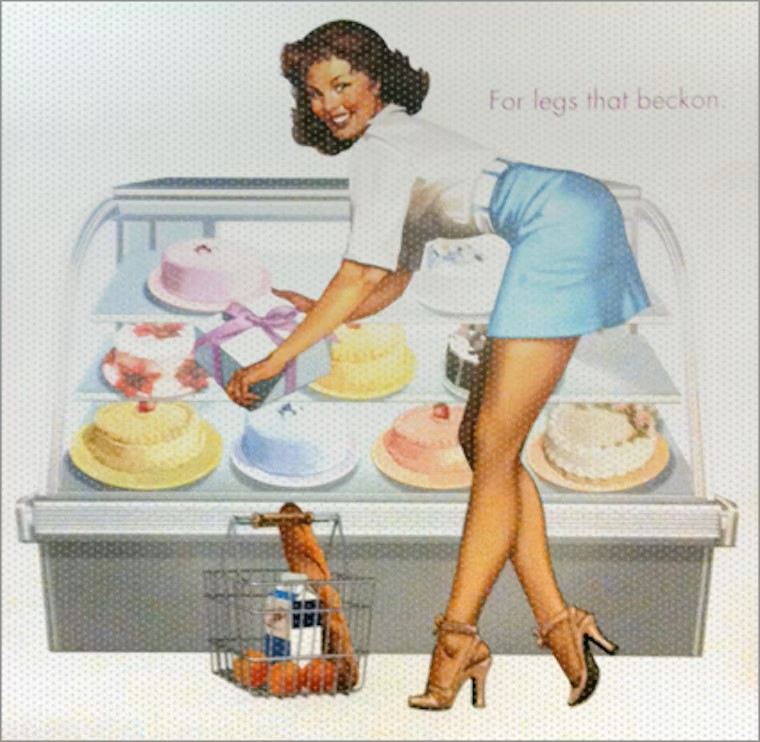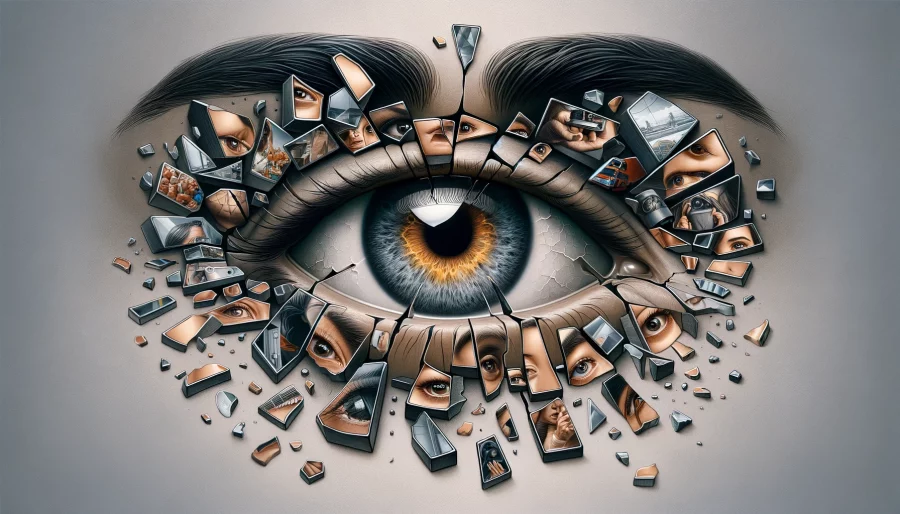Women are often portrayed as passive subjects of male desire, and their value is often determined by their appearance and ability to fulfill male sexual fantasies.
IntroductionпЉЪ

British feminist film theorist Laura Mulvey described the concept of the “male gaze” in her 1973 essay “Visual Pleasure and Narrative Cinema,” which was published in 1975 in the film theory magazine Screen.
This concept extends from film to any medium in which women are portrayed as well as, generally, to their experience in real life. For example, think about how women are often shown in advertisements, magazine covers, and social media compared with men, as well as how their bodies are typically framed by the camera. Consider the emphasis typically placed on how women look, dress, and comport themselvesвАФeven on their expressionsвАФas opposed to for men.
Essentially, the male gaze sees the female body as something for the heterosexual male (or patriarchal society as a whole) to watch, conquer, and possess and use to further their goals.
Three perspectives:

- The Gaze of the Male Character within the Film: How women characters are seen and treated by male characters.
- The Gaze of the Spectator: How the audience, which is assumed to be male, views female characters.
- The Gaze of the Male Creator of the Filmic or Artistic Work: The director’s (or artist’s) perspective shapes how female characters are presented.
ExampleпЉЪ

Then, to keep women on their toes, it was also suggested that they be sophisticated and talented and topless. In this 1970s Tiparillo Cigarette ad, the copy goes over what would happen if a man offered a square to a violinist.It’s aimed toward the male audience, but it gives women a peek behind the curtain, so to speak, as to what a guy is hoping for when he interacts with them. She’s got to be sophisticated вАФ hanging out with “the Beethoven crowd” вАФ but she’s also open minded, which explains why she’d be willing to try a cigarette and play with her shirt open. As all the accomplished violinists do.

You would think that this is just another one of your run-of-the-mill ’50s ads, but this is actually a Bic Soleil razors ad that ran in 2010. Here we see a woman grocery shopping and buying cakes in heels that Louboutin himself would approve of, with the simple message of: “Have legs that beckon.”
As you can imagine, the advert didn’t go over well with its female audience. According to AdWeek, it was quickly pulled from Toronto’s subway stations after “an outcry from those who say it portrays women as nothing but sexual objectsвАЬ. Instead of selling razors, the brand took a misstep and tried to sell the male gaze in the form of smooth legs.
In many movies there are close-ups of women’s bodies, and these scenes do tend to attract and excite the audience, but the audience tends to be male. Focusing on women’s sexy close-ups for a long period of time can be a shock to the senses, but it can also cause psychological discomfort to some viewers. For example, when a movie shows scenes of sexual violence, accompanied by large-scale nudity and the screams of the victims, it is hoped that the audience’s sympathy will be aroused, but it often does not get these effects, but rather, it will lead to the female audience’s disgust and questioning.
The influence of male gaze in lifeпЉЪ
Male gaze is rampant in many countries. This results in many girls being afraid to show their true selves, as men tend to imagine what they are like by the way they dress and look. This is a total stranglehold on women, and many women have to block out their truest selves for fear of being misunderstood by the outside world. It is often disrespectful for men to hit on women because they assume they will be open because of the way they dress.
Conclusion:

In my opinion, the male gaze is one of the signs of disrespect for women. In an increasingly progressive society, neither the male gaze nor the homosexual gaze should exist. In other words, you can dislike something, but you can’t deliberately disrespect it. From a feminist perspective, the male gaze limits and defines women in harmful and demeaning ways. I feel that women should not be defined, nor should they be appreciated as anyoneвАЩs works of art. As independent individuals, every womanвАЩs identity should be free.
ReferenceпЉЪ
Vanbuskirk, S. (2022) What is the male gaze?, Verywell Mind. Available at: https://www.verywellmind.com/what-is-the-male-gaze-5118422 (Accessed: 05 December 2023).
Slade, S. (2021) From the waist up: The male gaze vs the female gaze, Medium. Available at: https://theneonvulture.medium.com/from-the-waist-up-the-male-gaze-vs-the-female-gaze-ec85664a6ef4 (Accessed: 05 December 2023).
Male gaze (2023) Wikipedia. Available at: https://en.wikipedia.org/wiki/Male_gaze#Background (Accessed: 05 December 2023).







Hi, ZiJie. This is a very complete blog with theoretical knowledge, examples and opinions, which I like very much. All three of your examples are good examples of the “male gaze”. It taught me that the male gaze not only exists in movies, but also in commercials. I hope the world can be like you said, women do not become anyone’s appreciation of art, but an independent and free self.
Thanks for your comment.
In the film Barbie, every girl can be what she wants to be, being yourself doesn’t need anyone’s approval, you don’t have to be Barbie nor are you an accessory to a man.
There’s a really true statement within the film: patriarchy hasn’t disappeared, it’s just hidden better. In this case, many girls don’t realise that they are trapped under the patriarchal mindset. They have to deal with the oppression of men and the fear of being ostracised by the girls around them for standing out too much. So as your title says “You’re not a work of art.”
Thanks for your comment.
Hello. Your perception of women is very new and correct. Because in the olden days before our time, there will always be patriarchal ideas and it will take time to change them. Just like the father in the film Dangal, who initially was not supportive of his two daughters doing wrestling (due to their gender), but with time, this view will change because men and women are equal. Great article and examples!
First of all, I was attracted by your cover picture, which made me feel very attractive and immediately understood the theme you expressed.
Your blog layout is very clean and concise, but there is also some fun.
The second is your content, which makes me think it is very good. You have shown us many classic pictures to describe your theme, and it also makes me reflect on that women do show their naked bodies like people in many pictures. You also showed us the effect that the male gaze has on women in everyday life, which allows women regardless of nationality to discipline themselves with these bad things.
Thank you so much for sharing!
Your exploration of Laura Mulvey’s “male gaze” theory is comprehensive and highlights its enduring relevance across various media. The inclusion of real-world examples, such as advertisements and film scenes, effectively illustrates how this concept permeates our visual culture. The analysis of the different gazes within film, from characters to creators, adds depth to the discussion. The critique of problematic advertisements, like the Bic Soleil razors ad, emphasizes the potential harm of perpetuating the male gaze in contemporary contexts. Your attention to the psychological discomfort caused by prolonged focus on women’s bodies in cinema is a valuable point, promoting awareness of the impact on diverse audiences. Overall, your detailed examination contributes to the ongoing dialogue on gender representation and media influence.